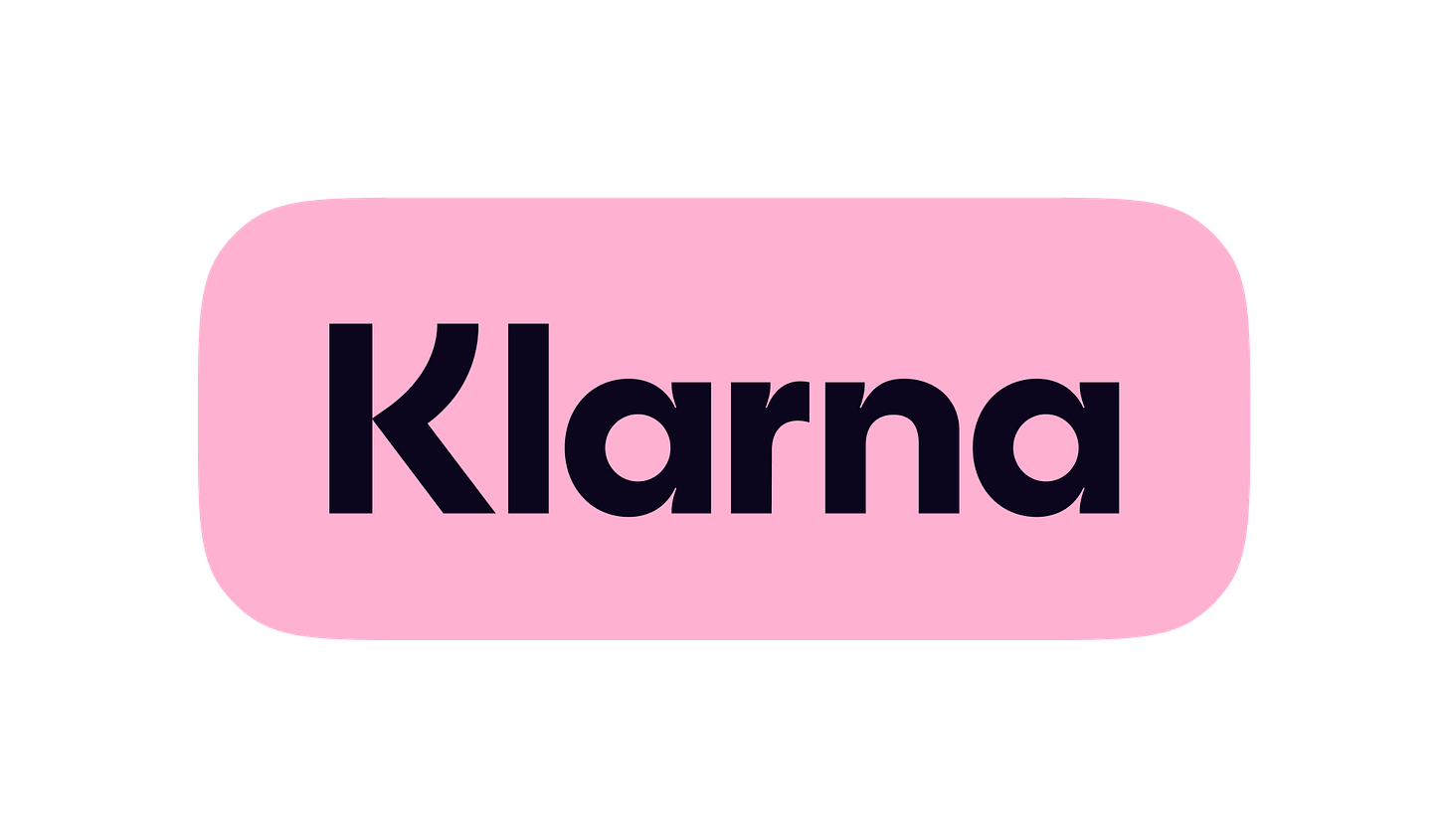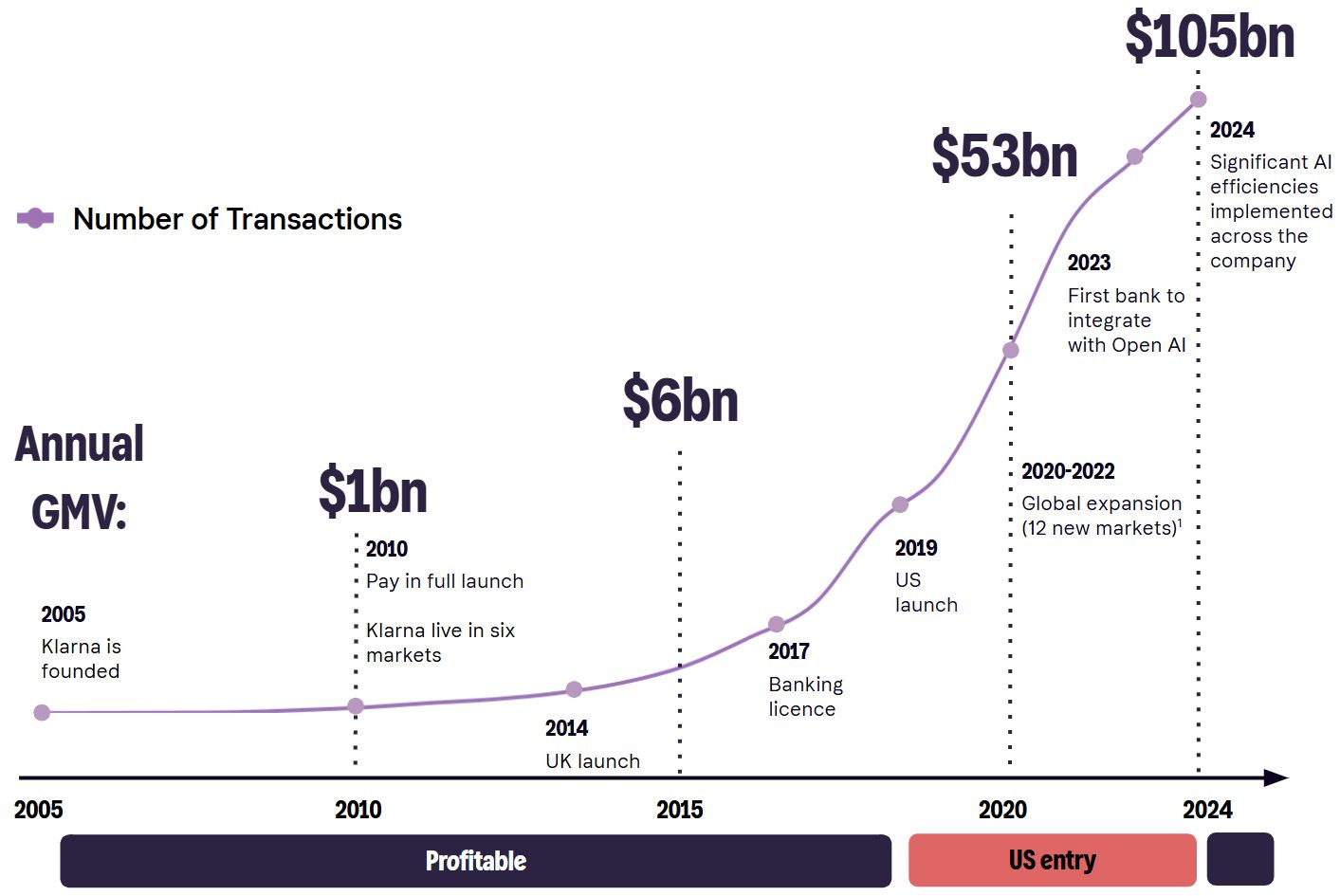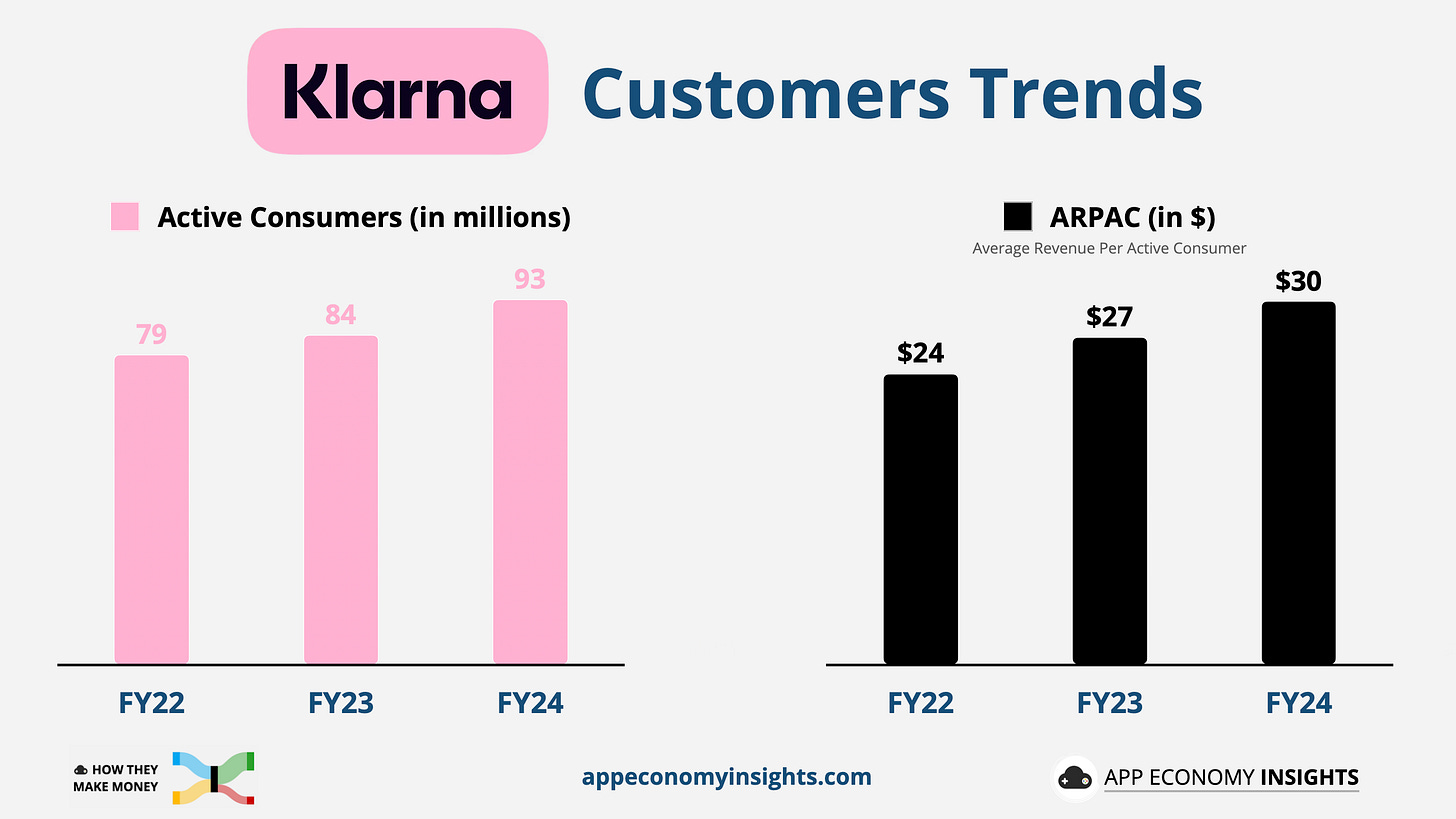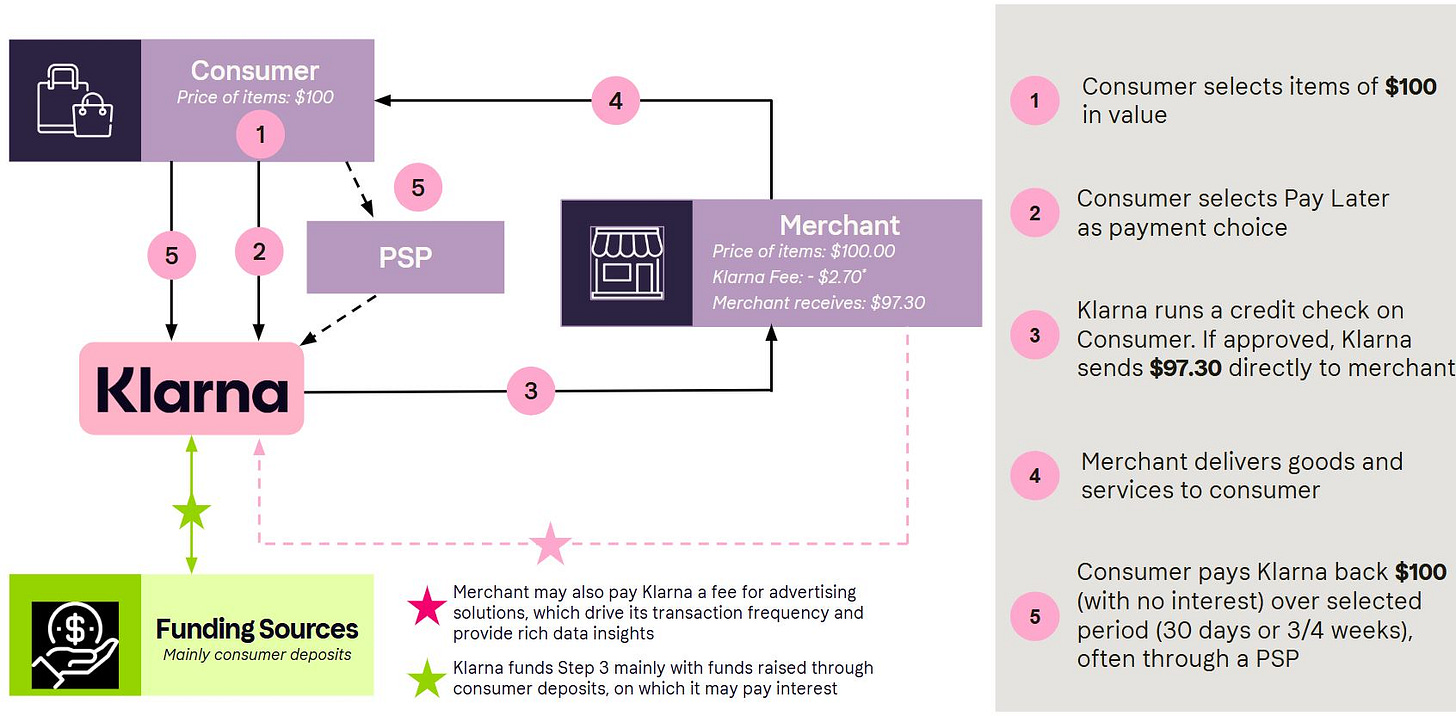💳 Klarna IPO: Key Takeaways
I spent hours reviewing the F-1 so you don't have to
Welcome to the Premium edition of How They Make Money.
Over 190,000 subscribers turn to us for business and investment insights.
In case you missed it:
Klarna has just filed for a highly anticipated US IPO, aiming to make waves in the Buy Now, Pay Later (BNPL) space.
This Swedish fintech giant reportedly seeks to raise $1 billion at a valuation of around $15 billion—still far from its $46 billion peak in 2021.
The company saw 24% revenue growth in 2024 while steadily improving its margins. But with looming regulations and stiffer competition, can Klarna solidify its spot as a global BNPL leader against a backdrop of market uncertainty?
I pored over the 300+ pages of Klarna’s F-1 so you don’t have to.
Let’s review what we learned.
Today at a glance:
Overview
Business Model
Financial highlights
Risks & Challenges
Management
Use of Proceeds
Future Outlook
Personal Take
1. Overview
Klarna was founded in 2005 by Sebastian Siemiatkowski (CEO) and co-founders Niklas Adalberth and Victor Jacobsson. Originally starting as a simple invoice solution in Sweden, Klarna popularized the concept of buy now, pay later—letting online shoppers split their purchases into interest-free installments. Over the years, it has become one of Europe’s biggest fintechs and expanded into 26 countries, including a significant push into the US.
Headquarters: Stockholm, Sweden (though the parent entity is now domiciled in the UK).
Mission: Disrupt traditional banking by offering transparent, fee-free consumer financing and flexible payment options for merchants.
Key Milestones
2005: Founded in Sweden.
2014: Launches in the UK.
2017: Obtains a full European banking license, enabling broader financial services.
2019: After being profitable for 14 years, enters the US market, leading to a rapid increase in GMV (Gross Merchandise Volume) and expanding losses.
2022: Valuation plunges below $7 billion after hitting $46 billion at its peak.
2024: Improving margins, pivoting aggressively to AI-driven operations.
2025: Files for a US IPO on the NYSE under the ticker KLAR.
Klarna touts 2.9 million transactions per day made by 93 million active consumers in 2024 (+11% Y/Y) and 675,000 merchants, ranging from small e-commerce sites to global retailers like Walmart, Target, and Amazon. It also partners with Apple and Google, offering BNPL options through their wallets.
Beyond a rise in active consumers, the company has shown increased purchase frequency over time, as shown in its Average Revenue Per Active Consumer (ARPAC), which has grown by 11% Y/Y to $30 in 2024. The platform shows network effects, with engagement increasing as more merchants join the platform in new geographies.
2. Business Model
Klarna positions itself as a consumer-centric finance platform with BNPL at its core.
In FY24, Pay Later represented 79% of GMV.
Illustative Transaction
Imagine a shopper sees an item priced at $100 and chooses Klarna Pay Later at checkout. Here’s the high-level flow:
Consumer Chooses Pay Later: Klarna performs a credit check. If approved, Klarna immediately pays the merchant — in this example, $97.30, reflecting an average 2.7% merchant fee.
Merchant Delivers the Goods: The merchant receives funds upfront, while the consumer pays nothing at that moment.
Consumer Repays Klarna: Over the next 30 days or a few weekly installments, the consumer pays the full $100 to Klarna with no interest unless they opt for extra payment flexibility (like snoozing a due date or converting into a longer plan).
In most markets, Klarna’s merchant-led fees form the core of its revenue. That’s why there’s no upfront or installment charge to the consumer for a standard Pay Later purchase.
Klarna’s core initiatives cover five critical categories:
Interest-Free Instalments: Its flagship BNPL offering. Klarna charges merchants a fee in exchange for boosting their conversion rates and average order value.







